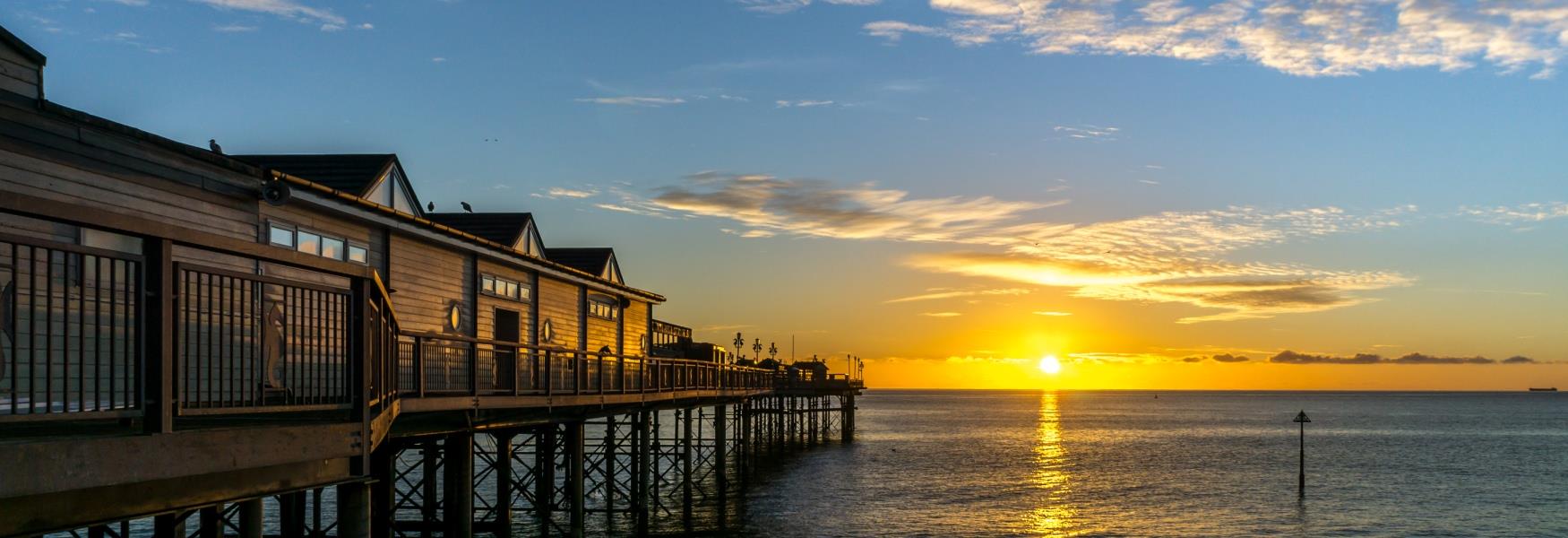
Newton Abbot has been a thriving market town since the early 13th century. Situated in Teignbridge and surrounded by beautiful countryside, the town is home to a fantastic range of shops, eateries, parks and is just a short distance from Dartmoor. The town is steeped in fascinating heritage and history which you can learn about below.
Traces of Iron Age hillforts have been found at Berry’s Wood, where inhabitants would have resided as a community in circular huts, as far back as the 7th century BC, as well as at Milber Downs, which can be dated back to the 1st century BC. Milber Downs was later occupied by the Romans, whose coins have been discovered there.
Did you know that Newton Abbot was originally created to be two towns? In 1220 the area south of the River Lemon was owned by the Abbey of Torre and he was granted the right to hold weekly markets and an annual fair. As the town flourished, it became known as Newton (new-town) Abbot. Not too long after that, in 1246, the Lord who owned the north area of the river was also granted the rights to hold markets and annual fairs – this was owned by the Bushel family and became known as Newton Bushel.
St Leonards Tower (Clock Tower) has become one of the most recognisable landmarks of Newton Abbot, but it was first built in the 13th century by the Abbots of Torre as a chapel. It was mostly demolished in 1836, but the people of the town managed to save the iconic clock tower. During the summer season, the tower is open every Wednesday if you’re curious to see the inside and find out more information from their friendly volunteers!
During the medieval period, the wool and leather industry both thrived, and centuries later, the clay industry became the main source of jobs. As the towns prospered, in 1663 the markets and fairs were joined together, until eventually the Newton Bushel market was closed and business moved to Newton Abbot. This decision came from the Yarde Family, who also built the Bradley Manor House in the early 15th century. You can visit Bradley Manor all year round for walks around the estate and woodlands, and the House, containing a vast amount of artwork, is open from April – October to the public.
The Union Bride was formed as a link between Newton Abbot and Newton Bushel in 1822 and the towns were finally joined under one council in 1901.
Newton Abbot Racecourse was first established in 1866 by a group of local racing enthusiasts as a space to celebrate equine sport in the region. This sport took off immediately and was incredibly popular in the town. The population of the town grew from a couple thousand to over 12,500 during the 19th century and was home to Dr Ivy Williams, the first female barrister, and the first women to teach at a British University.
The central reason for this growth in popularity was the introduction of the railway system in the area in 1846 when the line was extended from Teignmouth. Workshops to repair the locomotives were built in Newton Abbot and thus the town exponentially grew from a simple market town to an industrial base. As it stands today, Newton Abbot station offers rail services across the UK, including to Penzance, Bristol Temple Meads, and London Paddington. If you’re heading to or from Newton Abbot from Exeter or Paignton, you’ll be travelling along the stunning seaside Riviera Line, stopping at several picturesque towns like Dawlish and Torquay along the way. Next to the station, you’ll find Courtenay Park, which was laid out in 1854, with the bandstand opening in 1907. Queen Elizabeth visited troops in this very park in 1952, prior to her coronation.
Newton Abbot was also involved in the suffragette movement in 1908. Emmeline Pankhurst and her daughter visited Newton Abbot to campaign for votes for women, and joined forces with the Conservatives. During this time, a riot broke out after the news of the Liberal’s defeat on Union Street.
In 1871, the market was revamped with the introduction of the new site, which previously the River Lemon ran through, and Alexandra Hall, which is now a cinema. At the time, the hall was used as a concert venue, a lecture theatre, skating rink, boxing ring and community centre. By the year 1904 the town had opened a large hospital, and a library, amongst other independent businesses. In 1922, the town erected its war memorial monument in memory of the Newton Abbot men who had lost their lives in the First World War. During World War II, the town was bombed twice, killing a total of 21 people.
It’s not often you’ll come across a Renaissance-style building in Devon, but Passmore Edwards Public Library is just that. Passmore originally wanted to build a hospital, but as the town already had one he instead built a library and technical school for the town. This beautiful building, designed by well-known Victorian architect Sylvanus Trevail, in honour of Edward Passmore’s mother, who was born there.
More recently in Newton Abbot’s history, the town has adopted a flag in 2009, depicting an image of St Leonard’s Tower on a modified flag of Devon. The town council stated that the green was to represent the moors, the black is for granite and white is for clay. The cross of St Petroc is used to represent a major crossroad in the town and the arm of the cross represents the routes to Exeter, London and Dartmoor, just to name a few.
The town has two long-standing sports clubs; the Newton Abbot Rugby Club was established in 1873 and the cricket club was founded even earlier in 1851. Both clubs are still going today.
Find out more about the region and keep up to date with events and new blog posts by following us on Twitter and Instagram, or liking us on Facebook.
Related
Comments
Comments are disabled for this post.



 to add an item to your Itinerary basket.
to add an item to your Itinerary basket.









